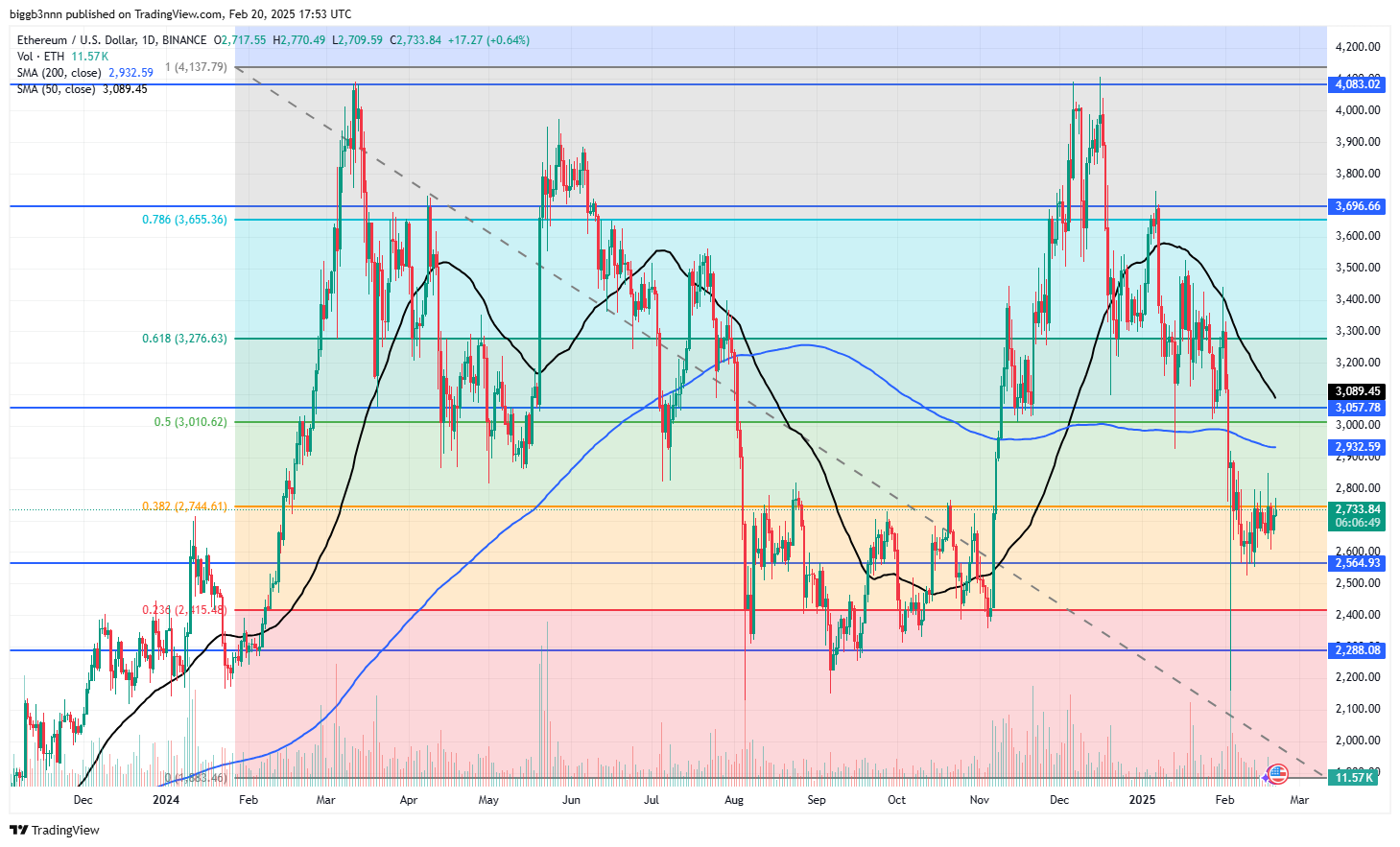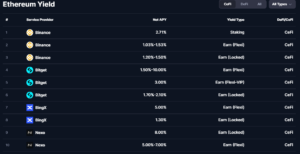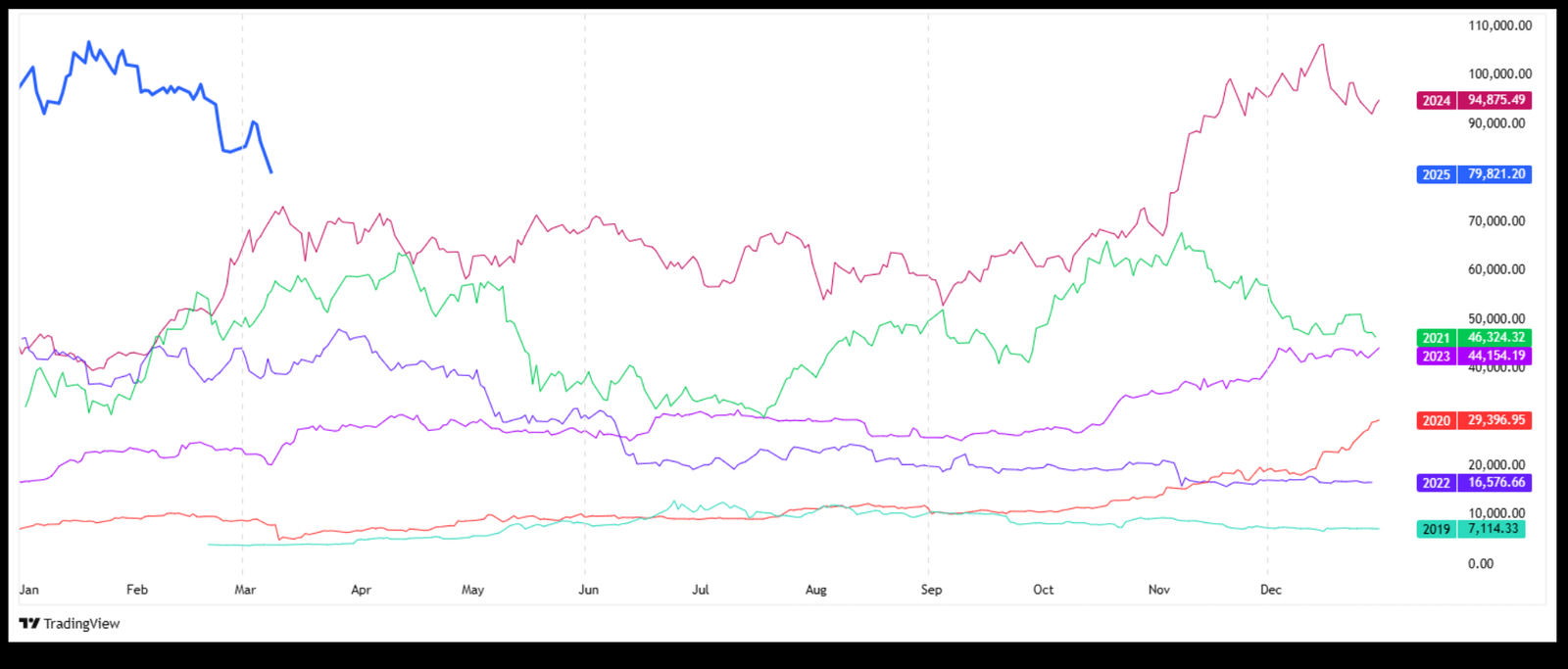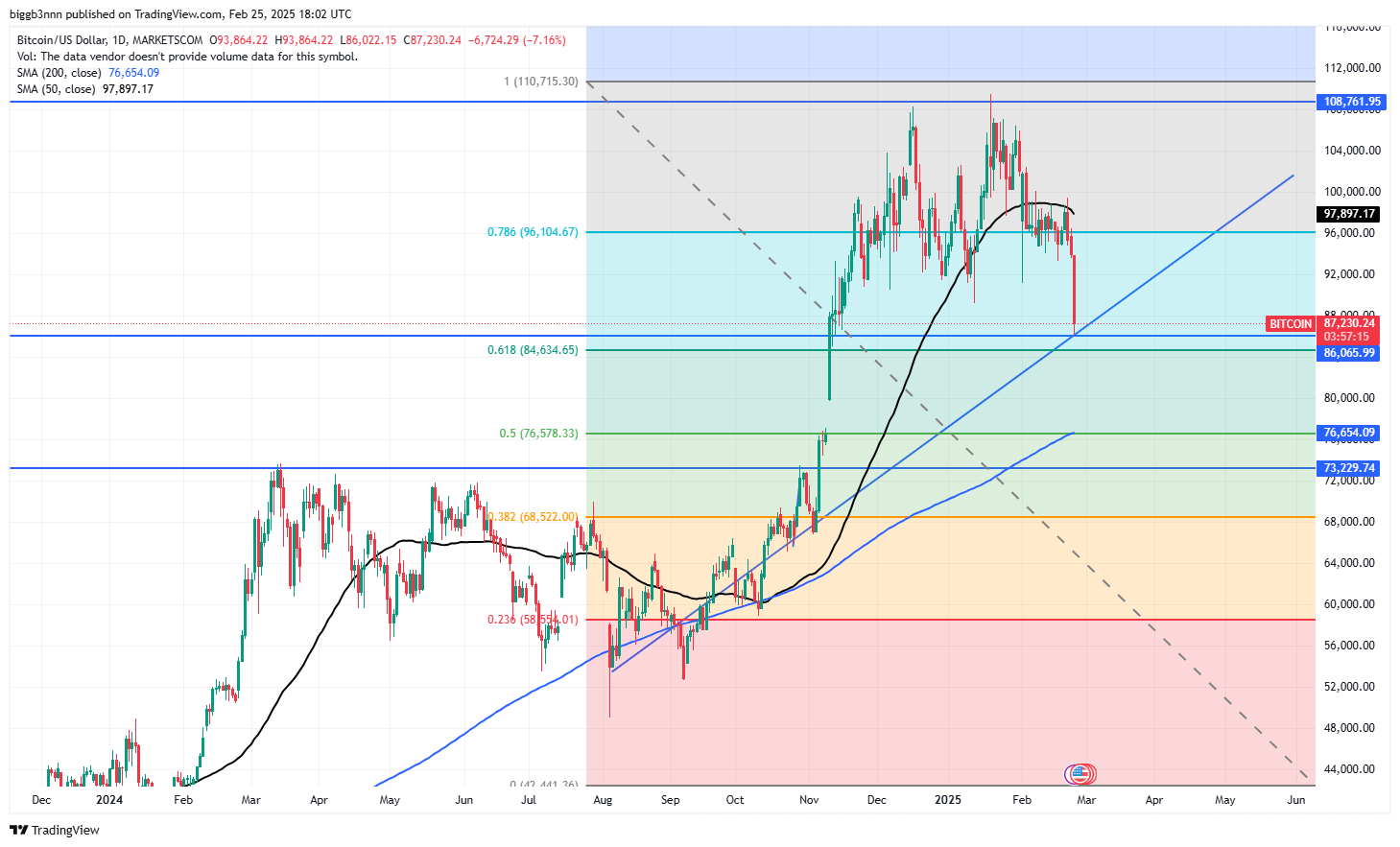Ethereum (ETH) has long been hailed as the backbone of the decentralized finance ecosystem. Despite its groundbreaking innovations and a robust network effect, recent market dynamics suggest that investors should temper their expectations for another all-time high in the near term. In this post, we dissect the myriad macroeconomic and micro-level factors impacting Ethereum’s price trajectory, including technical analysis, market sentiment, and competition from rival platforms like Solana.
With a comprehensive review of historical performance, economic conditions, and Ethereum’s current technical outlook, we aim to provide a balanced perspective on why ETH may struggle to surpass its previous peak of $4,891.70—recorded on November 16, 2021—despite its undeniable fundamentals.
Key Points
In summary, Ethereum’s journey—from its revolutionary inception to its current role as a global decentralized platform—has been nothing short of extraordinary. However, in today’s market, several factors combine to make another all-time high an unlikely near-term event:
- Macroeconomic Pressures: Global economic slowdown, rising inflation, tighter monetary policies, and geopolitical tensions are curbing speculative investment.
- Regulatory Uncertainty: Increased government scrutiny and regulatory measures are reducing market liquidity and investor appetite for volatile assets.
- Micro-Level Challenges: Intense competition from projects like Solana, an expansive circulating supply, and technical resistance levels are all acting as headwinds.
- Technical Analysis: Key indicators, including moving averages, RSI, and MACD, confirm a consolidation phase with strong resistance around $2,750–$2,800, while support remains firm near $2,700.
Overview of Ethereum (ETH)
Ethereum was introduced in 2015 by Vitalik Buterin and a team of visionary developers. Initially conceived as a decentralized platform for smart contracts, Ethereum has evolved into a comprehensive ecosystem hosting thousands of decentralized applications (dApps), tokens, and innovative financial products. Once a disruptor in the crypto space, Ethereum has grown into a global infrastructure project with a dedicated community of developers and users.
Current Crypto Market Landscape
The cryptocurrency market remains volatile and influenced by broader economic conditions. While Bitcoin continues to lead market sentiment, altcoins and major projects like Ethereum have felt the strain of shifting investor appetites. Despite Ethereum’s significant role as a pioneer of smart contracts and decentralized finance, market sentiment has grown more cautious amid uncertainties over global economic stability and regulatory pressures.
How Market Sentiment Influences Ethereum
Investor enthusiasm is no longer driven solely by technological breakthroughs. Instead, macroeconomic factors—such as rising interest rates and geopolitical tensions—have tempered the once exuberant appetite for risk, particularly in the altcoin segment. Even with a robust underlying ecosystem, Ethereum is now subject to the same market realities that have affected the broader crypto market.
Importance of External Factors
Global Economic Trends
Macroeconomic trends have a profound impact on crypto investments. Global economic uncertainties, including potential recessions and trade tensions, are forcing investors to reassess their portfolios. With traditional risk assets also under pressure, Ethereum’s performance is increasingly linked to these broader economic indicators.
Overview of Micro-Level Dynamics
At the same time, micro-level factors such as network upgrades, tokenomics, and competition with other smart contract platforms (like Solana) play a crucial role in Ethereum’s price dynamics. These factors influence investor sentiment by dictating the token’s long-term value proposition and short-term technical performance.
Macro Factors Affecting Ethereum’s Prospects
A. Economic Outlook

Global Economic Slowdown
Recent signs of a global economic slowdown have created a more risk-averse environment. With a potential recession on the horizon and economic uncertainties affecting both developed and emerging markets, riskier assets—including cryptocurrencies—are facing downward pressure. This environment reduces the likelihood of speculative surges that could propel Ethereum to new highs.
Inflation Trends
Persistently high inflation has forced central banks worldwide to tighten monetary policies. While some investors have historically sought refuge in crypto as an alternative asset, the volatility of Ethereum makes it less appealing during inflationary periods when investor risk tolerance is low. As real returns become a priority, volatile assets like ETH are often sidelined in favor of more stable investments.
Higher Interest Rates
The rise in interest rates has a direct impact on liquidity. With borrowing costs increasing and safer yield-bearing instruments offering attractive returns, the speculative capital that once fueled rapid price increases in Ethereum is now more cautious. This shift is a significant headwind for ETH, which relies on ample liquidity to sustain bullish runs.
Trade Tensions
Geopolitical conflicts and trade disputes can abruptly alter global investment flows. Such tensions often lead to a flight to quality, where investors prefer assets with well-established fundamentals. Even though Ethereum is a mature asset in the crypto space, its exposure to global trade tensions and market uncertainties reduces the probability of an explosive rally toward new ATH levels.
B. Regulatory Environment
Government Regulations
Cryptocurrencies continue to attract regulatory scrutiny around the world. In recent years, tighter regulations, enhanced KYC/AML measures, and increased oversight have been introduced. These regulatory changes, while designed to protect investors, often create an environment of uncertainty, dampening speculative investments in digital assets like Ethereum.
Impact on Market Liquidity
The threat of regulatory crackdowns can lead to reduced market liquidity. When liquidity contracts, even established tokens like Ethereum struggle to gather the momentum required for a breakout. Lower liquidity makes it difficult for the market to sustain upward price movements, thereby reducing the likelihood of ETH reaching a new all-time high.
Micro Factors Affecting Ethereum’s Prospects
A. Competition in the Smart Contract Platform Space
Direct Competitors
Ethereum is no longer the only smart contract platform in the market. Competitors such as Solana, Cardano, and Avalanche are vying for market share by offering faster transaction speeds and lower fees. For instance, Solana’s high throughput and efficiency have made it an attractive alternative for developers and investors alike, increasing competition for Ethereum’s dominance.
Emerging Tokens
In addition to established rivals, emerging platforms are continuously capturing investor attention with innovative features and utility propositions. These projects often lure speculative capital away from Ethereum, as investors look for the next breakthrough technology that might deliver superior returns.
Innovation and Utility
Although Ethereum remains the most mature platform with a thriving ecosystem, its development pace is challenged by newer projects that offer innovative solutions to scalability and cost issues. While initiatives like Ethereum’s upcoming upgrades aim to address these challenges, competitors such as Solana are already capitalizing on current inefficiencies. This intense competition makes it harder for Ethereum to command the kind of speculative fervor needed to drive prices to new record highs.
B. Tokenomics and Project Fundamentals
Supply Dynamics
Unlike many meme coins with artificially inflated supplies, Ethereum’s tokenomics are based on a more structured issuance model. However, its unlimited maximum supply and current circulating supply of approximately 120.56 million ETH (with no fixed cap) play a critical role in price dynamics.
While EIP-1559 has introduced a burning mechanism that reduces the circulating supply, the vast number of tokens in circulation makes it challenging to achieve a significant per-token price surge.
Ecosystem Developments
Ethereum has continuously evolved through network upgrades and the development of its ecosystem. Major projects like Ethereum 2.0 and The Merge have bolstered its fundamental value. Despite these strides, delays in rollout and scalability issues—especially when compared to high-performance competitors like Solana—dampen the immediate impact on price.
Investor Sentiment and Community Influence
Investor sentiment is strongly influenced by community narratives and social media trends. While Ethereum’s longstanding reputation and robust developer community continue to foster long-term optimism, short-term price movements are often driven by transient market emotions. The absence of the explosive hype seen in earlier cycles means that current community enthusiasm is more measured, aligning with realistic expectations rather than speculative mania.
C. Technical Analysis Insights
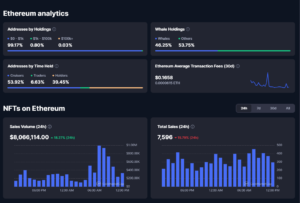
Recent Price Trends
Ethereum’s price has experienced periods of volatility and consolidation. According to data from CoinMarketCap, Ethereum is currently trading at around $2,731.39. Since its all-time high of $4,891.70 in November 2021, ETH has seen significant retracement. Recent price action suggests that the market is currently in a consolidation phase, where upward surges are stifled by strong resistance levels.
Key Technical Indicators
- Moving Averages: The 50-day and 200-day moving averages are key to understanding Ethereum’s current momentum. ETH’s 50-day moving average has been trading near current price levels, while the 200-day moving average provides a long-term support threshold. The proximity of these averages indicates a lack of strong upward momentum.
- Relative Strength Index (RSI): Ethereum’s RSI has remained in the neutral zone, suggesting that the token is neither overbought nor oversold. This balanced reading points to the absence of an imminent bullish breakout.
- MACD (Moving Average Convergence Divergence): The MACD indicator, which measures trend strength and momentum, has recently signaled a flat or slightly bearish momentum. This is consistent with the broader market consolidation observed in recent weeks.
Chart Patterns: Support and Resistance Levels
Ethereum’s charts indicate significant technical resistance around key levels. Based on current data, the primary resistance is situated between $2,750 and $2,800—a level that ETH has struggled to breach in recent sessions.
Conversely, strong support is identified in the $2,700 area, where buyers have consistently stepped in during market dips. This technical environment suggests that without a significant shift in market sentiment or external catalysts, Ethereum is unlikely to break out toward new all-time highs in the near term.
Synthesis: Why a New All Time High is Unlikely Soon
Integration of Macro and Micro Factors
The convergence of adverse macroeconomic conditions and micro-level challenges paints a sobering picture for Ethereum’s near-term prospects. On the macro side, a slowing global economy, persistent inflation, higher interest rates, and regulatory uncertainties are collectively dampening speculative investment. On the micro side, fierce competition from efficient blockchain platforms like Solana, alongside structural tokenomics and technical resistance levels, further constrain Ethereum’s price potential.
Risk Versus Reward in a Volatile Market
Ethereum remains a fundamentally sound asset with long-term potential. However, the current market environment highlights a classic risk versus reward scenario. In a climate of economic uncertainty and reduced liquidity, the risk associated with expecting a dramatic price surge far outweighs the potential rewards. Investors are thus advised to remain cautious, as the speculative momentum needed to propel Ethereum to new heights is currently lacking.
Investor Caution and Market Realism
While Ethereum’s underlying technology and ecosystem developments continue to position it as a key player in the blockchain space, the convergence of macroeconomic headwinds and technical resistance factors necessitates a realistic outlook. Investors should adjust their expectations and adopt a diversified approach, recognizing that short-term volatility is likely to persist even as the network’s long-term prospects remain robust.
Final Outlook for Ethereum
While Ethereum continues to be a cornerstone of the decentralized ecosystem, its immediate future is likely to be characterized by cautious consolidation rather than a meteoric rise. The blend of macroeconomic challenges and micro-level competitive pressures suggests that investors should moderate their expectations for an explosive rally. Instead, the focus should remain on the long-term potential of Ethereum as network upgrades and ecosystem developments gradually bolster its value proposition.
Investment Takeaways
- Diversification: With the market exhibiting significant volatility, investors are advised to diversify their portfolios and not overcommit to a single asset, however promising it might appear.
- Risk Management: Prudent risk management, including stop-loss strategies and balanced asset allocation, is essential in the current climate.
- Focus on Fundamentals: While technical indicators are currently signaling resistance, the underlying strength of Ethereum’s technology and community offers long-term value.
- Stay Informed: Continuous monitoring of both macroeconomic trends and on-chain developments is crucial for making informed investment decisions.
References and Further Reading
Economic Reports and Analyses
Cryptocurrency Market Reviews
Regulatory Updates
Disclaimer: This article is for informational purposes only and should not be construed as financial advice. Investors are encouraged to perform their own due diligence and consult with professional advisors before making any investment decisions.

